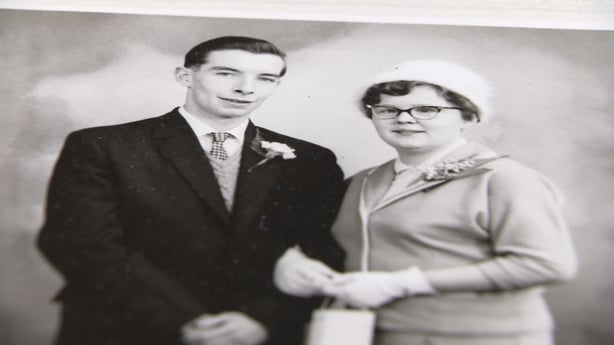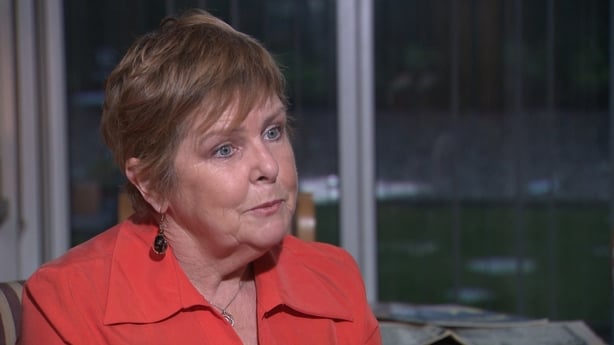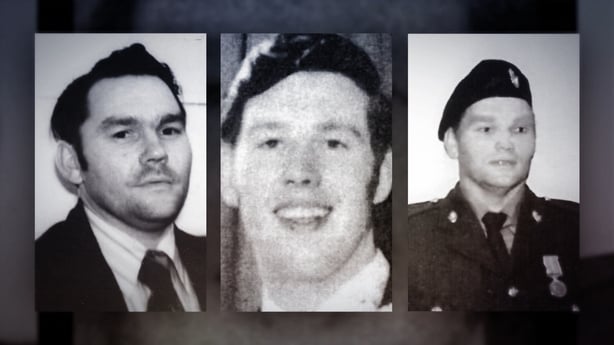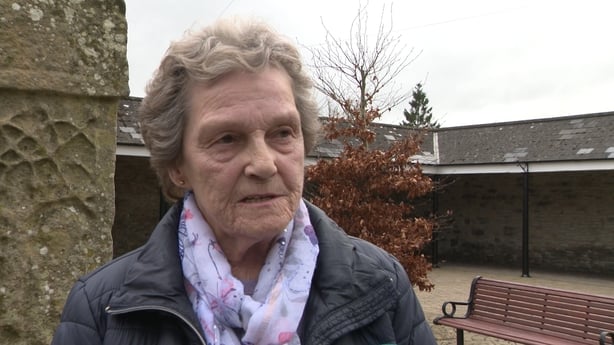A quarter of a century ago this week something remarkable happened.
An agreement many had thought was impossible brought an end to what was known as the Troubles in Northern Ireland.
It was a conflict that lasted three decades in which over 3,500 people were killed and tens of thousands injured, bereaved and traumatised.
This time 25 years ago the Irish and British governments, political leaders and republican and loyalist paramilitaries in Northern Ireland were locked in talks under the chairmanship of US Senator George Mitchell.
There had been false dawns before and many of the participants and journalists who had followed every step of the talks believed there was a strong chance this would be another one.
The sight of Brid Rodgers, then deputy leader of the SDLP, jumping for joy and hugging colleagues in the party's office in Stormont's Castle Buildings early on the morning of Good Friday, 10 April 1998, signalled that perhaps this time was different.
Later that day Senator Mitchell announced that a deal, The Belfast Agreement, had been reached. Due to the day of the announcement, it immediately became known as the Good Friday Agreement.
"The trauma is carried with you."
— RTÉ News (@rtenews) April 3, 2023
During three decades of conflict in Northern Ireland, over 3,500 people were killed. As the 25th anniversary of the Good Friday Agreement approaches, the human cost of the Troubles is still acutely felt.
Read more: https://t.co/snOrdbtmkY #GFA pic.twitter.com/nqgupJVnRH
So why did it matter?
The terrible human cost of the period known as the Troubles is laid bare in the pages of the book Lost Lives, which lists the personal details of the dead and how they died.
"The fact that it brought all kinds of people together, you know, Protestant, Catholic, security forces, members of paramilitary organisations all in one place, I think people started to regard it as a kind of memorial," said journalist Chris Thornton, one of the book's four authors.
The book began as a project within the newsroom of the Irish News in Belfast when the late Seamus Kelters suggested gathering the names of all those killed in north Belfast, which accounted for around 20% of all deaths in the Troubles.
We need your consent to load this rte-player contentWe use rte-player to manage extra content that can set cookies on your device and collect data about your activity. Please review their details and accept them to load the content.Manage Preferences
When that was complete, it was decided to expand the project to include all deaths. It took a further seven years to complete.
Originally envisaged as a research aid for journalists, it quickly became much more and was awarded the Ewart Biggs prize for promoting reconciliation.
"One historian called it an act of historical recovery," Mr Thornton added.
"I like that because I think it does reflect that people who might have been otherwise forgotten by wider society are in a place where they can be remembered."

during rioting in Armagh on 14 August 1969
The Troubles also left tens of thousands injured, bereaved and traumatised.
For many, the suffering and anguish continues.
"They did a big study between 2004 and 2008 and Northern Ireland came tops of more than 30 countries in the world for the highest incidence of post-traumatic stress disorder (PTSD)," explained Isobel Stewart, a psychiatric nurse and therapist who works with the WAVE trauma centre, a cross community victims and survivors support group.
"It would be linked to death, incarceration, torture, it would be physical beatings, internment, witnessing things happening to other people.
"It would show up in ways like anxiety, depression, hyper-vigilance, addiction was a huge issue because people had to find some way of managing their pain."
One of the first Troubles killings listed in Lost Lives is that of John Gallagher.
The 29-year-old was walking home during rioting between rival factions in Armagh on 14 August 1969 when he was shot in the back by a member of the B Specials.
He left behind a wife and three children aged seven, six and five.
"My memories are being lifted up to look into his coffin before they actually put the lid on the coffin," said his daughter Cathy McCann, who was five-years-old at the time.
More than half a century later, she says the huge sense of loss remains.
"The trauma that happened then is carried with you the rest of your life," she explained.
"I remember when each of my children turned five, I thought something is going to happen either to me or their father because I was five when daddy was taken from us. I know that might sound irrational, but that was how I felt."

Cathy herself was directly caught up in the violence in July 1990 when she was injured in an IRA landmine explosion just outside Armagh.
The huge bomb killed 3 RUC officers and Sister Catherine Dunne, the only nun to be killed in the Troubles.
Cathy was the front seat passenger in the car the nun was driving.
She felt a sense of hope when the Good Friday Agreement was signed, despite the fact that IRA members responsible for the bomb attack were released from jail early as part of the deal, and no one was ever charged in connection with her father's death.
"I had to think very carefully about it at the time," she recalled.
"At that stage, I had my three children and I was thinking about them and their future, and their children's future.
"If it meant we were going to move forward, that my children and grandchildren weren't going to experience what I'd experienced and my mum had experienced and our family had experienced, I was quite happy to put up with the fact that they would be released."
The names of three Co Fermanagh brothers, Ronnie, Cecil and James Graham, also appear in Lost Lives.
All members of the Ulster Defence Regiment (UDR), they were shot dead in separate attacks by the IRA while off duty.

died in separate attacks by the IRA while off duty
"You just can't forget your loved ones, particularly when they're taken so brutally from you," said Pam Morrison, their sister.
"I am very proud of them all. They felt it was their duty to wear their uniform and to protect the country and I am proud of them.
"It was devastating that they were going out doing their duty, to help save other people, you know, when they were sleeping in their beds at night, to think that they were out doing that and then when they were off duty doing their ordinary working hours, that this is what would happen to them."
While she felt a sense of relief at the thought that the Troubles were over, there was also a sense of despair that her brothers' killers had not been caught.

"It was great to know that it had ended the violence like, you know, and other families were not going to suffer like what the rest of our other families had suffered, not me alone, there had been other families that had suffered the same," she explained.
"And it was a relief to know that there would be no more of it, but it would have been better if we had justice for the ones that we had lost."
Trauma therapist Isobel Stewart said stories like those of Cathy and Pam demonstrate that for many thousands the impact of the Troubles has not ended.
"Trauma means 'wounds', the Greek word for wounds, there are lots of wounds that have not been healed," she said.
Northern Ireland remains deeply divided, but the Good Friday Agreement changed its future by laying the foundations for political differences to be settled with words, not weapons.
More Good Friday Agreement headlines
What is the Good Friday Agreement?
The Good Friday Agreement at 25 - then and now






